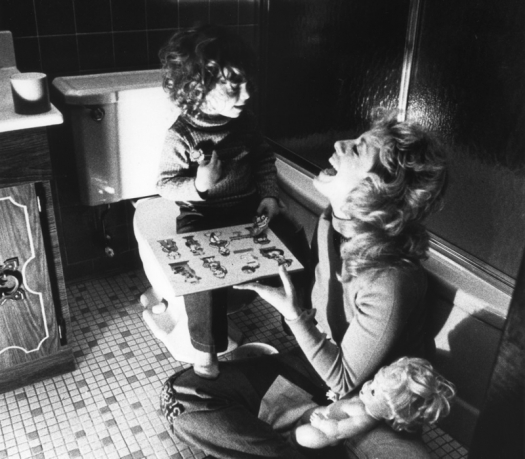Autism is surmountable… if we’re willing to move beyond traditional approaches
AutismTreatmentCenterOfAmerica.jpg

Courtesy of the Autism Treatment Center of America
Aerial view of the Autism Treatment Center of America
Does autism scare you? If so, you’re not alone. Who wouldn’t be afraid, given the messages of fear, hardship, and hopelessness that many parents and professionals are bombarded with when it comes to this particular challenge?
We’re told about the staggering increase in autism spectrum disorders over the last several years. We are informed that a condition that once touched less than one in 10,000 children the United States today affects 1 in 68, and 1 in 42 boys! People with autism are described to us as anti-social, disconnected people with no imagination who spend their days engaged in bizarre repetitive behaviors or who, if verbal, endlessly perseverate about inconsequential minutia while remaining socially detached, unable to form relationships with others. Furthermore, it is asserted that children receiving such a diagnosis have an irreversible, lifelong affliction, leaving many of us with little or no hope for our children’s future improvement or recovery. But does it have to be this way? Or can we blaze a trail to lead ourselves out of the fear and the darkness and into the arms of our children?
We do not have to settle for these dim prognoses. How do I know? Well, I used to have autism. Now I know the words “used to” may be throwing some of you for a spin. We don’t see those words on the same page as autism, let alone in the same sentence. And yet, at the Autism Treatment Center of America®, where we teach a unique treatment modality called The Son-Rise Program®, we see children defy their prognoses on a regular basis. In fact, I was the very first child to be helped with this program.
As a little boy, I was diagnosed as severely autistic, with a tested I.Q. below 30. Completely mute and withdrawn from human contact, I would spend my days endlessly engaged in repetitive behaviors (usually termed “stimming” in the current lingo) such as spinning plates, rocking back and forth, and flapping my hands in front of my face. I didn’t want to be touched, I never looked at other people, and I did not give the slightest response to the calls and requests of the people around me. I was, in every way, “in my own world.”
The prognosis was stark. My parents were told to expect little change in my development. It was explained that I would never speak, never have friends, never go to school, never learn to communicate with others in any meaningful way. My condition, it was said, was incurable, unchangeable, and “hopeless.” The traditional autism doctors and professionals recommended eventual institutionalization.
RaunAndSamahriaKaufman.jpg

Courtesy of Raun Kaufman
Raun and his mother, Samahria Kaufman
My parents searched diligently for a way to help me progress, but were offered none. They sought a ray of hope but were handed only dark predictions. And so they did something truly amazing. With no support, without anyone to help clear a path for them they blazed a trail of their own. Marking a complete departure from traditional methods of “treatment,” my parents, authors/teachers Barry Neil Kaufman and Samahria Lyte Kaufman, designed and implemented an innovative and groundbreaking program that was both home-based and child-centered. And, thus, The Son-Rise Program was born.
After working with me for over three years, my parents achieved what the experts had deemed “impossible.” Their Son-Rise Program enabled me to recover completely from my autism without any trace whatsoever of my former condition, ultimately graduating from the Ivy League’s Brown University with a degree in Biomedical Ethics. I now lecture internationally at conferences, symposia, and universities worldwide, as well as being an author, teacher, and the Director of Global Outreach for The Son-Rise Program at the Autism Treatment Center of America.
Although, unfortunately, so many children are still, at an early age, being given the life sentence that was once handed down to me, we do not have to acquiesce to such a verdict. An alternate choice exists. After my recovery, my father wrote a book relating our story in detail. Now entitled Son-Rise: The Miracle Continues, this book went on to sell over a million copies and was turned into an NBC television movie. In the avalanche of press and attention that followed the publication of the book and subsequent airing of the television movie, my parents were flooded with requests for help.
Therefore, in 1983, they founded what is now known as the Autism Treatment Center of America (part of a non-profit, charitable organization), which is dedicated to helping parents and professionals caring for children with autism spectrum disorders and related developmental challenges. At our center, located in Sheffield, Massachusetts, USA, we teach a system of treatment and education designed to help families and caregivers enable their children to dramatically improve in all areas of learning, development, communication, skill acquisition – and, most especially, to form meaningful and fulfilling relationships with others. We have worked with tens of thousands of people from across the globe and achieved results that have changed the face of autism worldwide.
Currently, we offer a myriad of programs, including two types of introductory programs which provide parents and professionals with all of the tools they need to set up, implement, and maintain a child-centered Son-Rise Program.
Our in-person week-long course, The Son-Rise Program Start-Up, which is held throughout the year on our pastoral 100-acre mountainside campus, teaches – through slides, videos, lectures, interactive activities, and question-and-answer sessions – the educational techniques, strategies, and principles of The Son-Rise Program. This enables course participants to truly understand their children and adults on the autism spectrum and then use that understanding to facilitate the kind of learning and growth in their children that they may have been told was simply not possible.
At the Start-Up, we teach everything from facilitating interaction and getting eye contact to developing speech and language and dealing with tantrums and repetitive “stimming” behaviors. We also address, in detail, subjects such as creating a special work/playroom for optimal learning and recruiting and training a support team. Additionally, we provide attitudinal training so that parents and professionals can maximize their effectiveness in each and every moment spend with their children. Participants often leave at the end of the program not only with concrete tools and techniques, but also with a fundamental shift in perspective – from pessimism to optimism, from despair to hope.
For people who feel that they cannot get to our campus, cannot take any time off work, or cannot travel or leave home, we have a brand new course: The Son-Rise Program Online. This self-paced course can be easily accessed on your own time from anywhere with internet service. It contains nine months of dynamic, interactive course material, plus access to a vast online library of helpful videos, tutorials, and documents.
The specific principles of The Son-Rise Program are quite powerful. Their implementation can generate an impact that is both immediate and lasting.
The foundation
The foundation of The Son-Rise Program rests upon this idea: the children show us the way in, and then we show them the way out.
This means that, rather than forcing our children to conform to a world they do not understand, we begin by entering their world first. In this way, we establish a mutual connection and relationship. This is the platform for all education and growth! Since autism is fundamentally a social relational challenge (not a behavioral disorder), creating interpersonal relationships and social interaction remains our primary focus.
Joining
The crucial starting point for The Son-Rise Program and one of the first principles taught to parents in the Start-Up course and online is called joining. Instead of stopping our children’s repetitive “stimming” behaviors, we join in with these behaviors. Such behaviors could include hand-flapping, stacking blocks, making a particular sound, repeating lines from a movie, or even talking about a favorite subject over and over again. Our children are performing their behaviors for reasons that are important to them (and, as an increasing body of research shows, these behaviors often serve a physiological purpose, as well). So this is the time for us to become fascinated students of our children’s world! Let your child be the teacher! See what your child loves about this activity or subject matter! If your child is, say, making a tower out of blocks, get some blocks of your own and begin building your own tower. If your child is talking about trains over and over again, listen with baited breath! (An important key here is not to do anything to try to change or redirect the behavior.)
Decades of work with families and their children show that joining builds trust, connection, and a bond around a common interest (the key to forging interpersonal relationships). Children who are joined become more interested in others, interact more, and – amazingly – “stim” less. What’s more, this interest in others is spontaneous, not forced. These children interact because they want to.
Motivation
Once we have our children’s willing engagement, the door is open to help those children to learn and grow. One of our key teaching principles is to capitalize on each child’s own motivation. With children on the autism spectrum, traditional learning modalities will rarely be motivating. Therefore, we customize the presentation of any curriculum to match each child’s highest areas of interest.
Instead of pushing a child repeat a task (and receive rewards) over and over again as a way to facilitate mastery, we build games and activities around the interests that child already has (such as Thomas the Tank engine, dinosaurs, or physical play). This way, we work with each child instead of trying to teach “against the grain.” Thus, learning is exponentially increased - with a powerful benefit: we have our children’s willing and excited cooperation. And when our children have learned something – not memorized it, but learned it – it becomes a generalized skill that they can use spontaneously (rather than in a more robotic manner).
Socialization
Autism isn’t a math disorder. It isn’t a reading disorder. And it isn’t an object-naming disorder. At its core, it’s a social relational challenge. This is why, in The Son-Rise Program, we focus on social goals before academic goals. Academic goals, while important, will do nothing to help our children overcome their central challenge of connecting with others socially. As first priority, do we want our children to be able to do long division or have more friends? Do we want our children to compensate for their socialization challenges or overcome them?
When it comes to measuring where a child is socially, creating child-specific social goals, and then helping children to achieve them, we use a special tool called The Son-Rise Program Developmental Model. The centerpiece of this model, the Four Fundamentals of Socialization, is comprised of interactive attention span (the prerequisite for everything else), include eye contact & nonverbal communication, verbal communication, and flexibility (the most underappreciated goal in traditional learning environments).
As we are working to help our amazing children to achieve these social milestones, it is essential to prioritize the interaction over any one goal. No matter how important we think a particular goal is, interaction and connection will always get our children further in the long run. For our children to accomplish a given goal on one particular day instead of a day or two later is much less significant than for our children to continue to build a bridge of interaction between their world and ours. So, if you start to see that sticking with your goal is creating tension, conflict, or resistance, set the goal aside for the moment and keep the interaction alive.
Attitude
The single most overlooked area when it comes to autism treatment is attitude. Having a non-judgmental, welcoming, and optimistic attitude toward our children determines whether they feel safe and relaxed enough to interact with us and learn. Over the decades, we have continued to see that children with autism tend to move away from people they perceive as uncomfortable, agitated or judging and towards people they see as comfortable, easy, fun and non-judgmental. Thus, our attitude can provide the impetus for a challenged child to reach out to us, or it can unwittingly act to drive that child away. We spend time in our Start-Up and online course helping parents with their emotional and attitudinal challenges because it really, really matters.
For the past twenty years, I have seen parents and dedicated educators and professionals use these techniques – as well as their time and their caring – to achieve extraordinary results with the special children and adults in their lives.
This is why it was such a labor of love for me to write my book, Autism Breakthrough: The Groundbreaking Method That Has Helped Families All Over the World. It meant so much to me to write a step-by-step manual for other people – no matter where they were – to be able to implement the techniques that changed my life and lives of so many other children with whom I’ve worked.
So no matter what you are told, please know that there is hope for your child. Of course, “experts” who don’t know your child will see what your child has not done yet and speak as if they know what your child cannot do ever.
But you are the parent. You have a love, a lifelong commitment, and a day-in, day-out experience with your child that no one else can match. You may sometimes feel pushed aside, but never forget that you aren’t in the way, you are the way.
You have every right to believe in your child. You have every capability to see the possibilities for your child, even when no one else does. And while we cannot know or promise in advance what any particular child will accomplish, we will never decide in advance what your child will not achieve.
The only reason I can write this letter to you today is because my parents believed in me when no one else on earth did. And that is a special role that you, as a parent, can have with your child. And no one can ever take that from you.
You’re not about to give up on your child. Neither are we.
For more information, contact the Autism Treatment Center of America. Phone calls with Son-Rise Program Advisors are available free of charge.


